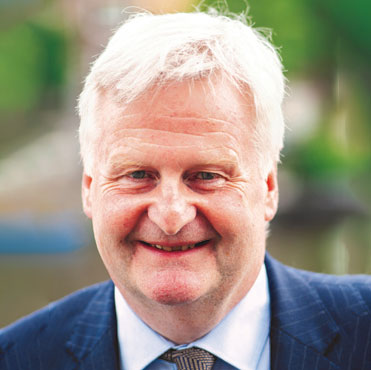
Prof Eamonn Rogers
Chair, EAU Patient Office
Patient-physician communication is the foundation of erectile dysfunction treatment. Yet, the public is barely aware that there is a conversation to be had.
Erectile dysfunction (ED) is a condition that over half of men over the age of 40 experience, though only a minority can even define what it is. This alone should raise alarm bells, but the cause behind this lack of knowledge is not surprising.
Many find the topic of erectile dysfunction to be a taboo subject and avoid speaking about it when relevant. This lack of attention, and thus awareness, leads to worse symptoms and longer periods of suffering than if those experiencing EDs were empowered to speak to a doctor.
Awareness of ED found to be alarmingly low
In a 2020 pan-European study of over 1,000 individuals, only half of respondents could correctly identify the definition of erectile dysfunction. Research found that 52% of men aged 40–70 experience ED, making this lack of awareness a cause for concern.
Furthermore, respondents did not know how common the condition is, greatly underestimating its prevalence. This lack of knowledge and patient communication further contributes to the isolation people may feel when struggling with ED. The reality is: ED is treatable for most patients, and yet, one in four respondents had never heard of any of the listed treatments for ED.
Less than a third of patients spoke to their partners
about their struggles with ED, and a quarter never
spoke to anyone at all, including a doctor.
Erectile dysfunction and patient engagement
The lack of awareness around ED is a key example of the importance of patient engagement in the treatment process. ED has a tremendous quality-of-life impact on patients, leading to greater reported stress and anxiety, but the taboos and stigma around ED lead men to avoid seeking help. Less than a third of patients spoke to their partners about their struggles with ED, and a quarter never spoke to anyone at all, including a doctor.
Awareness and communication are key to treating ED
Engaging patients with educational tools and direct communication are key to breaking through the taboos surrounding men’s sexual health. If patients don’t know that they aren’t alone, don’t know that their symptoms are the result of a medical condition and don’t know that treatments are available to them, why would they communicate their struggles?
Physicians need to proactively communicate with their patients about ED. We, as a society, need to break down the taboos around ED; and men need easy access to educational tools to inform them about such conditions and treatments.

